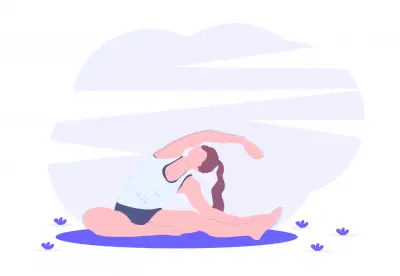
Physical Education Questions and Answers
Test your physical competence and knowledge of movement and safety with these JAMB and WAEC past questions.

Test your physical competence and knowledge of movement and safety with these JAMB and WAEC past questions.
The external openings of the nasal cavity that admit air to the lungs are called ?
larynx
nostrils
oesophagus
trachea
Correct answer is B
The external openings of the nasal cavity that admit air to the lungs are called nostrils. The oesophagus is a tube that connects the throat to the stomach. The larynx, also known as the voice box, is involved in breathing, producing sound, and protecting the trachea against food aspiration. The trachea, also known as the windpipe, is a tube that connects the pharynx and larynx to the lungs, allowing the passage of air
invisible baton exchange
Non-visual baton exchange
visual baton exchange
virtual baton exchange
Correct answer is B
Non-visual baton exchange is the type of baton exchange in which the receiver of the baton will not see as the baton is being placed in his/her hand
The agency that fights human trafficking in nigeria is __
NAPTIP
NAFDAC
ICPC
NDLEA
Correct answer is A
The agency that fights human trafficking in Nigeria is NAPTIP (National Agency for the Prohibition of Trafficking in Persons). NAFDAC (National Agency for Food and Drug Administration and Control) is responsible for regulating and controlling the manufacture, importation, exportation, distribution, advertisement, sale and use of food, drugs, cosmetics, medical devices, chemicals, and packaged water. NDLEA (National Drug Law Enforcement Agency) is a Federal agency in Nigeria charged with eliminating the growing, processing, manufacturing, selling, exporting, and trafficking of hard drugs. ICPC (Independent Corrupt Practices Commission) is a Nigerian agency that is mandated to receive and investigate reports of corruption and in appropriate cases prosecute the offender(s)
How many pairs of the spinal nerve are located in human?
13
12
31
33
Correct answer is C
Spinal nerve arises from spinal cord. In humans, there are 31 pairs. They are 8 cervical, 12 thoracic, 5 lumbar, 5 sacral and 1 coccygeal
Which of the following is not a water-borne disease?
hepatitis
Headache
cholera
typhoid
Correct answer is B
Headache is not a water-borne disease. Water-borne diseases are caused by pathogenic microorganisms that most commonly are transmitted in contaminated fresh water. Examples of these diseases include typhoid, cholera, and hepatitis which are caused by bacteria, viruses, and parasites respectively